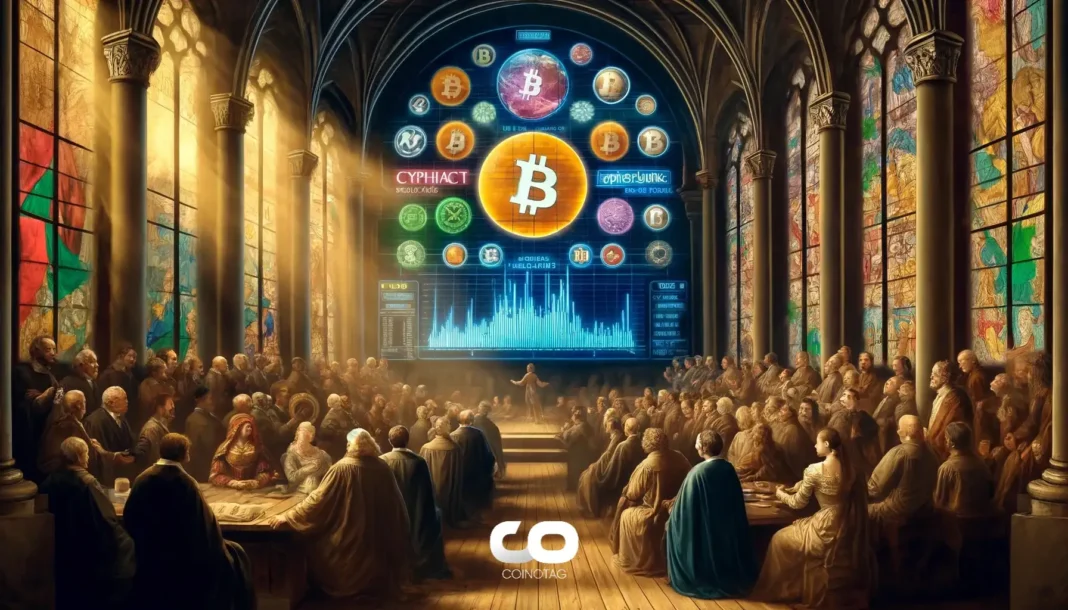-
The recent surge in Bitcoin’s volatility relative to traditional equities highlights ongoing instability in financial markets.
-
In a striking turn, the S&P 500 experienced volatility levels comparable to Bitcoin’s, illustrating how intertwined market reactions can be during periods of economic uncertainty.
-
According to Bloomberg analyst Eric Balchunas, “The spike in the S&P 500’s volatility indicates that traditional investors are becoming increasingly anxious, mirroring Bitcoin’s notorious price swings.”
The convergence of Bitcoin and S&P 500 volatility reveals rising anxiety in financial markets due to external economic pressures and geopolitical uncertainty.
Bitcoin and S&P 500: A Volatility Paradox Amid Market Turmoil
The **unprecedented volatility** in the S&P 500, reaching 74 amidst Donald Trump’s tariff announcements, surprisingly mirrored Bitcoin’s own fluctuations, which were recorded at 71. This convergence, as noted by Balchunas, suggests a significant **shift in investor sentiment** as traditional markets grapple with elevated risk levels. Historically, the S&P 500’s volatility has hovered below the 20 mark, indicating that this recent turbulence is notable.
Market Responses: Traditional Assets vs. Cryptocurrency
The recent developments of a trade war with China have resulted in **crisis-level volatility** affecting not only equities but also alternative assets like Bitcoin. With increased tariffs potentially impacting various sectors, investors are clearly on edge. “Bitcoin’s volatility remains significantly higher, positioned at nearly four times that of gold and global equities,” according to findings by BlackRock.
This divergence between traditional markets and cryptocurrencies emphasizes the unique **behavioral patterns** within the crypto space, where volatility is often a fundamental characteristic. As these markets react to geopolitical shifts, Bitcoin continually showcases its potential for sharp price movements, marking it as a distinct asset class.
The Cautious Stance of Institutional Investors
Despite the broad market rally witnessed on April 9, exacerbated by the halt in tariffs, Bitcoin did not share in the enthusiasm. This indicates that institutional investors remain **cautiously optimistic** about entering the crypto market. Analysts at Bitfinex expressed that the prolonged outflows from spot Bitcoin ETFs suggest a **wait-and-see approach** among larger investors wary of entering during market instability.
“Recent trends show that substantial outflows have occurred, reflecting a lack of aggressive buying from institutions,” the analysts noted. This hesitance underscores an **evolving landscape** for Bitcoin, with many possibly seeking clearer regulatory frameworks before committing significant capital.
Looking Ahead: Bitcoin’s Potential Recovery
While current dynamics might seem unfavorable, experts posit a potentially bullish outlook for Bitcoin heading into the second quarter of 2025. According to Bitfinex, upcoming shifts in narratives surrounding crypto, such as **sovereign wealth accumulation** and the adoption of tokenized real-world assets, could reshape market perceptions positively. Joe Burnett from Unchained aligns with this optimism, asserting that Bitcoin presents **increasingly favorable characteristics** for long-term investors amidst growing concerns over government fiscal policies.
Conclusion
To summarize, the recent short-lived spike in S&P 500 volatility highlights the fluid relationship between traditional markets and cryptocurrencies. While Bitcoin experiences short-term pressures, the potential for a resurgence remains apparent as institutional interest seeks clarity. As traditional equities grapple with uncertainty, Bitcoin continues to stand out as a significant asset class, holding promise for investors keen on hedging against instability.





